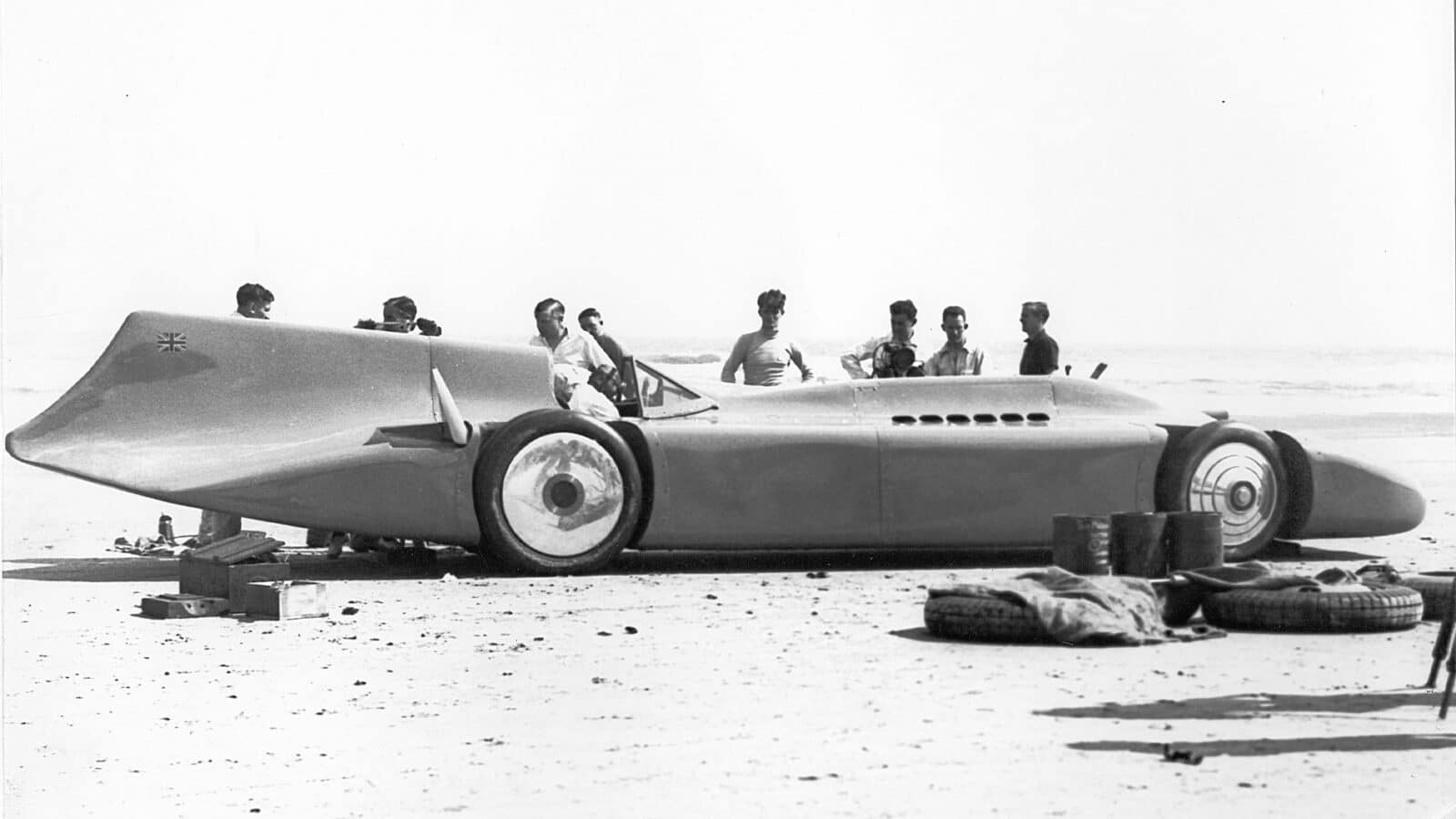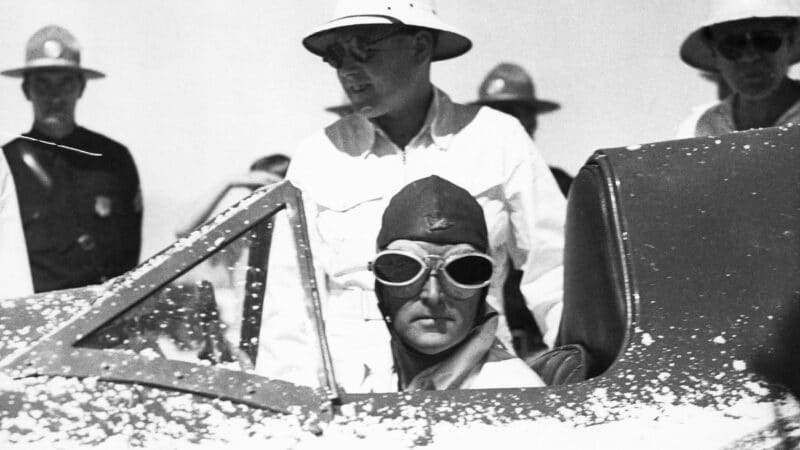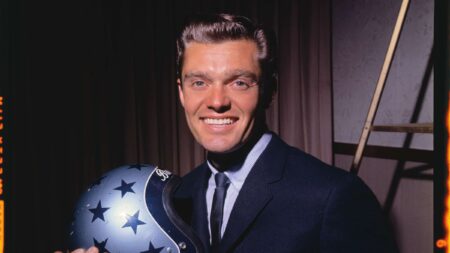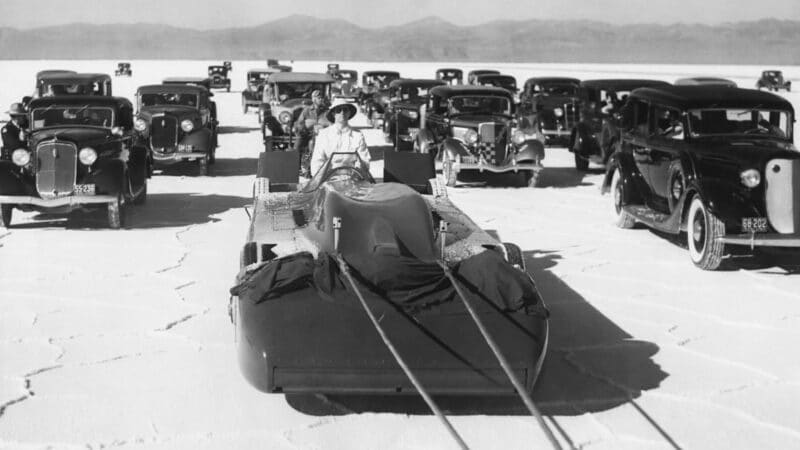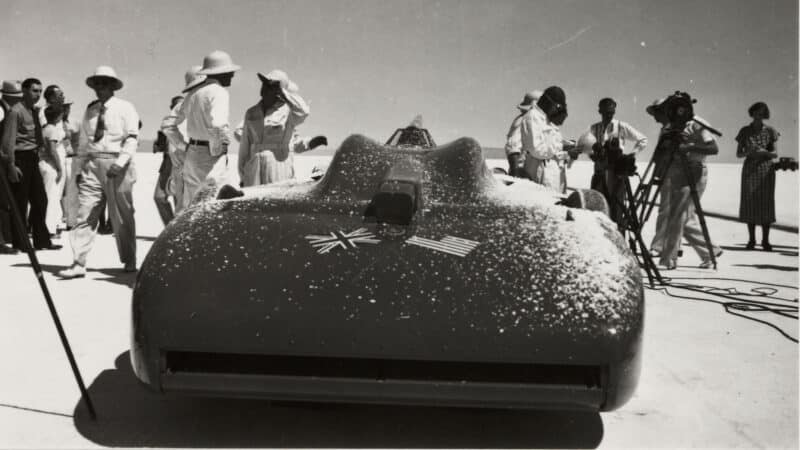The first part of our journey was uneventful but on our way back we ran into the only tree which existed for 100 miles or more. The pilot cracked his skull in a couple of places whilst I had my nose almost severed from my face, as well as other injuries. We were eventually sent down to Cape Town, and whilst lying in hospital, news came through that our track had been ruined by torrential rainstorm. Considering not a drop of rain had fallen in that locality for over 21 years, this was indeed bad luck.
I gave instructions for the work to be commenced all over again and just as I was recovering from my accident, a cable came through from Segrave stating he had successfully raised the record on his new car to 231.3mph.
I had gone out to Africa with the object of beating 207.5mph, and my car was now capable of a speed of at least 220mph, but to exceed 231mph was a very different proposition.
About May 1929 the stage was set, the course had been re-made and the Blue Bird had been sent up to Verneuk Pan, but again our luck was out. Violent dust storms raged continuously and we were more or less marooned for nearly a fortnight, our food and water supplies nearly running out. The weather eventually cleared and one morning at the crack of dawn the attempt was made. The mile was covered at an average speed of 225.3mph which was exactly 6mph under the record set up by Segrave at Daytona a few weeks earlier. My tyres were in a shocking state, torn to ribbons owing to the sharp flints, which we had been unable to remove from the hard-balled mud.
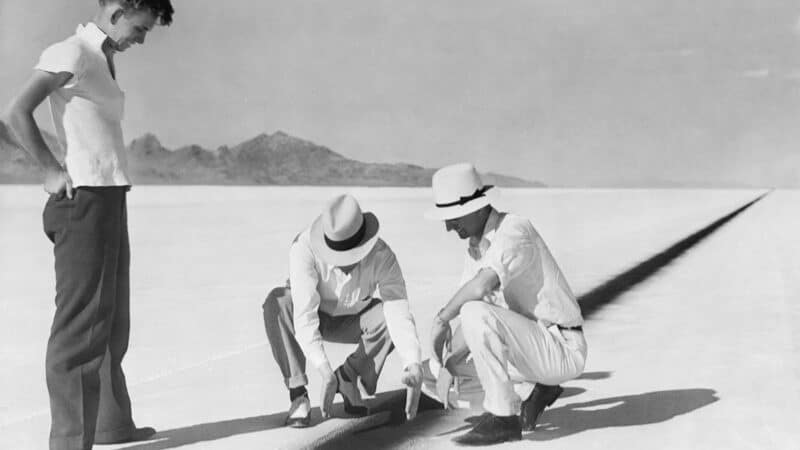
Laying down the track lines
Getty IMages
We subsequently made many other attempts but we could never exceed this speed. Eventually we used up all our tyres in these vain attempts and so it was useless continuing. I eventually arrived back home towards the end of June, a sadder, wiser and poorer man.
Work proceeded afresh and by the end of 1930 the car was equipped with a 1450hp Napier Lion supercharged engine, a new streamline body, and many other improvements. February 1931 again saw us at Daytona Beach and this time success crowned our efforts, Segrave’s record being handsomely eclipsed with a speed of 246.6mph. Not content with this we went over again to Florida the following year, raising the speed to 253.5mph.
I had now conceived the burning ambition to put the record up to the 300mph mark, but to achieve this I knew we should require at least 2000hp. I eventually persuaded Rolls-Royce to sell me one of their special Schneider Trophy engines. This motor was a masterpiece, giving off 2350bhp, or 2475bhp if alcohol was employed. The car was again modified, being equipped with a new back axle, gearbox, and chassis side members.
